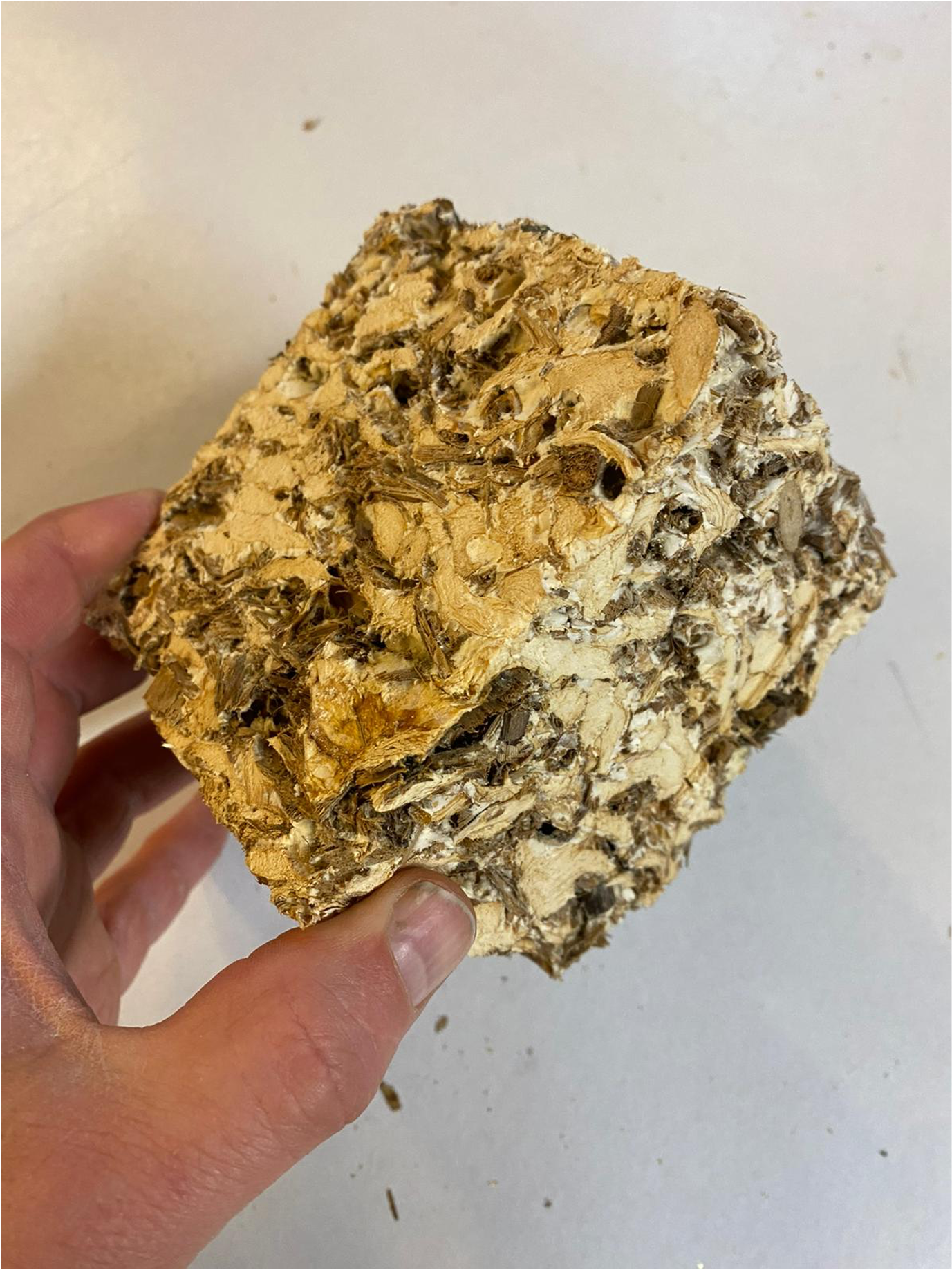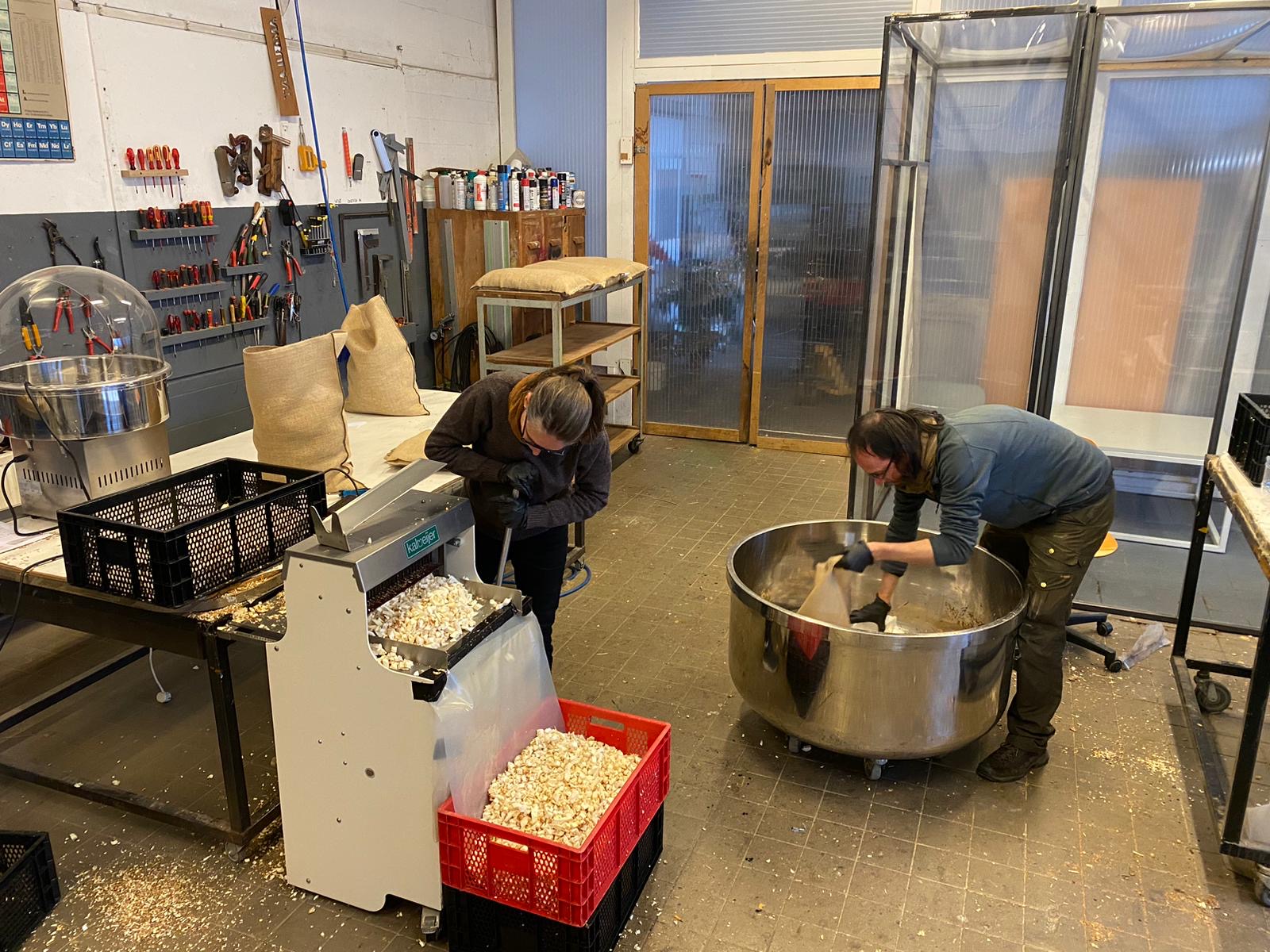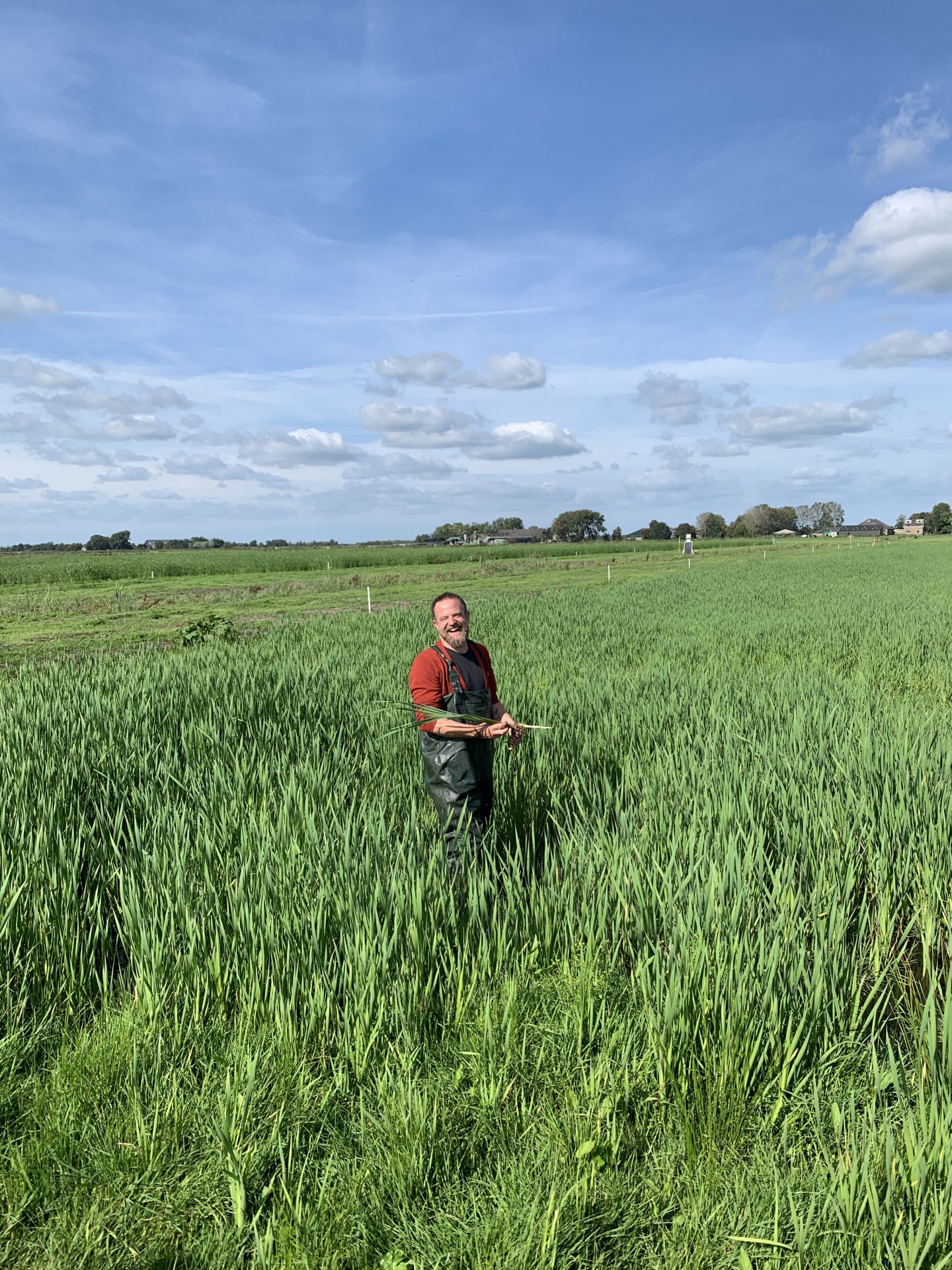tjeerd veenhoven creates boundary objects as conversation starters
Born and raised in the Frisian peat meadow region, Tjeerd Veenhoven has been working in this same lowland landscape since 2016, developing sustainable material innovations and design interventions. Initially as part of the climate adaptation programme Better Wetter (better water), and since 2022 as a resident at the Veenweide Atelier. “This is my home turf,” he says — fully embracing the language of the land.

When your artistic product is the invention of a new idea, there’s often no name for it yet. That’s why developing a shared vocabulary with stakeholders in the region is a central theme in Tjeerd Veenhoven’s work. He calls his creations boundary objects. Tjeerd shows one: a square block, roughly the size of his head, pale white-grey, lightly fused together. It looks a bit like styrofoam, but is made of cattail fibres bound with mushroom spores. Earlier this week, he brought it to a local farmer he’s working with through Veenweide Atelier. He placed it on the table between them — as a conversation starter.
“Boundary objects are elements that can connect people from different backgrounds,” Tjeerd explains. “If I do it right, people recognise something in the object that speaks to their own experience.” A farmer might see which machines from their own shed could help make it. An architect might spot potential for construction. From there, they begin to define together what the object could become — and what role it might play in the region’s transition challenges.

peatlands as a catalyst for broader transition
While for Tjeerd Veenhoven the process often matters more than the final application of his designs, he does believe that each of his ideas should lead to something tangible. “Peatlands across the Netherlands have been turned into grasslands, which has significantly boosted agricultural production in the past,” he says. “But now we’re reaching the limits of that model. We face major challenges, and we simply have to start building and cultivating in new ways. That’s why I want to contribute concrete solutions — not just speculate.”
The Frisian peatland is one of the last remaining peat landscapes in the Netherlands. According to Tjeerd, it’s a unique and fragile ecosystem, where small imbalances can tip everything over. “But that also means,” he stresses, “that if we succeed in restoring the ecological balance here, we can do it elsewhere too.” If we manage to restore the peatland, the rewards will be far-reaching: increased biodiversity, a stronger natural ecosystem, and a region that remains livable for generations to come.
”fungi deserve a better reputation”
One of the obstacles to that restoration, Tjeerd says, is how we think about nature — and about building materials. Our synthetic solutions have become so dominant that we struggle to step away from them, even when they’re part of the problem.
“A concrete floor, for instance, is still incredibly popular. People think it helps fix moisture problems by sealing off the ground. But for a healthy indoor climate, it’s actually more important that moisture can escape. A house should be able to breathe — the water needs to evaporate from the inside out.”
Natural building materials might not last forever, but according to Tjeerd, they’re far better suited to creating a healthy living environment. “A sustainable material isn’t defined by how long it lasts, but by how well it fits within a circular system.”
Still, anything associated with nature is often seen as inferior — or even dirty. Take fungi, for example. They carry a bad reputation, especially when linked to our homes. After all, who wants mould on their walls? But Tjeerd believes this fear is misplaced. In fact, fungi could play a crucial role in the transition to sustainable living. “Fungi naturally perform all kinds of processes that we urgently need in sustainable construction,” he says. “Fermentation, for instance, is one such process — it allows you to bind materials together. And that opens up all kinds of new possibilities.”

embracing alternatives
According to Tjeerd, the willingness to think in alternatives has grown in recent years: “Of course, part of that is due to the pressure farmers feel from government policy.” But the farmers he speaks to are often personally open to his ideas — as long as there’s something in it for them. “And I can’t blame them,” he says.
With Fiber Farmers, the project he’s developing within the Veenweide Atelier, he wants to show that farming in the peatland area can continue — just differently. By cultivating fibre crops that thrive on wet soil, like cattails. Or by using existing machinery to process agricultural waste flows, such as fungal spores.
His hope is that the prototypes developed in Fiber Farmers will speak especially to those farmers still seen as conventional. “That’s where the real gains are to be made.”